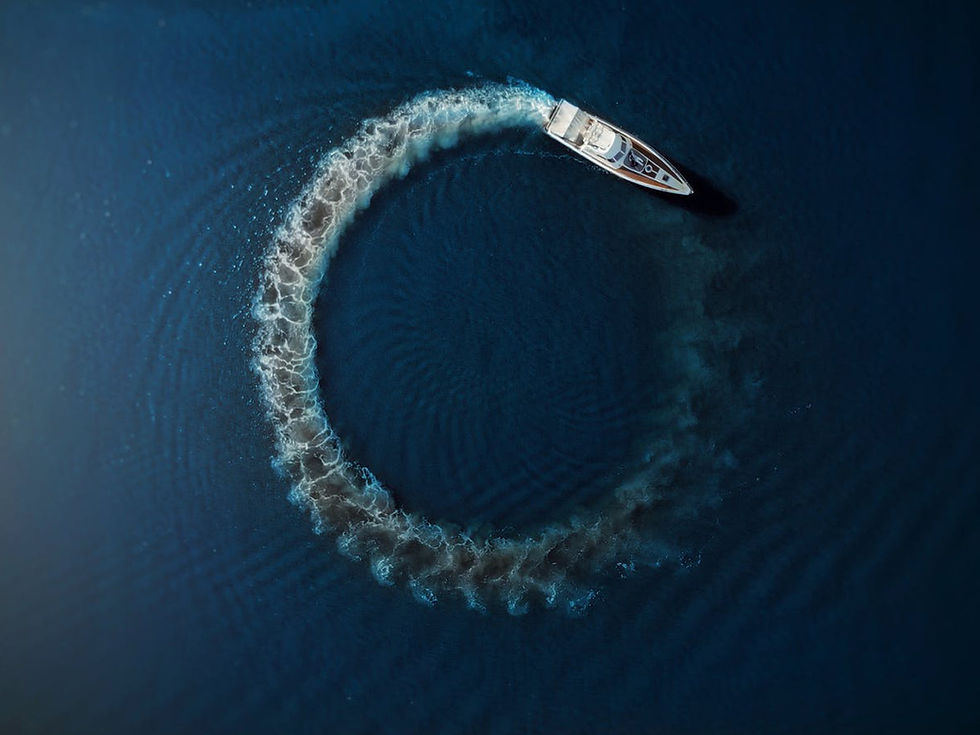Fishing in Troubled Waters: Toxic Contaminants in Florida Lagoon Ecosystem
- Fight For Zero
- Nov 16, 2022
- 4 min read
Updated: Sep 26

Are the Fish Safe to Eat? Contaminant Risks in Brevard County’s Indian River and Banana River Lagoon
BREVARD COUNTY, FL — If you’ve spent time fishing along Florida’s east coast, you've likely noticed the changes, cloudier waters, declining fish populations, and worsening algae blooms. Among the most impacted waterways is the Indian River Lagoon, a 156-mile-long estuary designated as an Estuary of National Significance by the U.S. Environmental Protection Agency (EPA) in 1990.
Once celebrated as the most biodiverse estuarine habitat in North America, the Indian River Lagoon has become an ecosystem in distress. Over the past few decades, over 100,000 acres of seagrass have been lost due to chronic harmful algae blooms, leading to mass die-offs of manatees, dolphins, and shorebirds. In 2013, global news outlets labeled the lagoon a “killing zone,” a stark signal of ecological collapse.
Now, with pollution continuing to plague the lagoon and adjacent Banana River, a growing question among residents is: Are the fish still safe to eat?
Why Fish Safety Matters in the Indian River Lagoon
Fishing is more than recreation in Florida—it’s a food source and a cultural staple. However, water quality concerns raise serious health questions. Fish in the Indian River Lagoon and Banana River may carry dangerous levels of:
Mercury
PFAS (per- and polyfluoroalkyl substances)
Cyanotoxins
Microplastics
PCBs (polychlorinated biphenyls)
Pesticide residues
Saxitoxins (linked to neurotoxicity in algae blooms)
While fish consumption advisories exist for mercury in other regional water bodies (e.g., Lake Washington, Fox Lake, St. Johns River), no official state advisory exists for the Indian River or Banana River Lagoon—despite mounting evidence of contamination.
Mercury: A Persistent Threat
Mercury, particularly methylmercury, is a potent neurotoxin. It enters the environment primarily through coal-burning power plants and industrial emissions, settling into waterways where it bioaccumulates in fish tissue. In Florida, some of the highest recorded levels of methylmercury in the U.S. have been detected in fish, dolphins, and birds.
The Ocean Research & Conservation Association (ORCA) analyzed over 700 fish from four counties (Brevard, Indian River, St. Lucie, and Martin) and found that while Martin County fish had the highest levels, mercury concentrations in the Indian River Lagoon are still concerning and remain consistent with levels measured 10–20 years ago.
PFAS: The "Forever Chemicals" in Fish
PFAS are synthetic chemicals used in firefighting foam, industrial processes, and non-stick consumer goods. These substances do not degrade in the environment and accumulate in living tissue. Exposure is linked to:
Thyroid dysfunction
Kidney and liver damage
Immune suppression
Cancer
Developmental issues in infants and children
Brevard County is a known PFAS hotspot, largely due to aerospace activity and military installations. Fight for Zero, a nonprofit based in Brevard, is currently partnering with the University of Florida and ORCA on a three-year PFAS study, including fish tissue analysis. Preliminary findings suggest that PFAS levels in local fish are cause for concern, although full results are still pending.
Microplastics: Widespread, Underrated Risk
Researchers at the University of Central Florida have documented some of the highest microplastic concentrations in the world in the Indian River Lagoon. These particles, often smaller than a grain of rice, are ingested by fish and transferred up the food chain.
ORCA’s preliminary study of 380 fish revealed:
53% of fish had microplastics in their stomachs
Particle counts ranged from 1 to 14 pieces per fish
Sources include plastic packaging, cigarette butts, clothing fibers, and fragmented bottles
ORCA’s ongoing One Health Fish Monitoring Project aims to analyze fish fillets, not just stomach contents, to assess human dietary exposure.
What the State Is (and Isn’t) Testing
The Florida Department of Health (DOH), Florida Department of Environmental Protection (DEP), and Florida Department of Agriculture and Consumer Services manage the state's fish consumption advisory program. However:
Not all water bodies are tested
Testing focuses mostly on mercury
PFAS, PCBs, and emerging contaminants are largely excluded
This means that even if fish in a certain area aren’t listed as unsafe, they may still pose risks—especially in waters known for industrial activity, past pesticide use, or nearby military operations.
“A fish advisory limited to mercury is incomplete,” said Stel Bailey, Executive Director of Fight for Zero. “We need testing for PFAS, pesticides, and plasticizers if we want to truly understand the risks.”
How You Can Help
Volunteer with ORCA’s One Health Fish Monitoring Project:https://teamorca.org
Donate fish samples to support tissue analysis
Use the Florida Fish Consumption Advisory Tool:https://fldoh.maps.arcgis.com
Conclusion: Fish Are Warning Signals
The Indian River Lagoon and Banana River are canaries in the coal mine of Florida’s water crisis. Declining water quality, widespread algae blooms, and increasing chemical burdens are not just ecological issues—they’re public health issues.
Until consistent, comprehensive testing is in place and emerging contaminants like PFAS and microplastics are fully understood, residents should approach fish consumption with caution—especially pregnant women, children, and those who rely on subsistence fishing.
Sources
Ocean Research & Conservation Association (ORCA) – https://teamorca.org
Fight for Zero PFAS Study – https://fight4zero.org
University of Central Florida – Microplastics in Indian River Lagoon
U.S. EPA: Indian River Lagoon Estuary Program – https://www.epa.gov/nep
Florida Department of Health: Fish Advisories – https://www.floridahealth.gov
CDC: Mercury in Fish – https://www.cdc.gov/biomonitoring/Mercury_FactSheet.html
ATSDR: PFAS & Health Effects – https://www.atsdr.cdc.gov/pfas




Comments